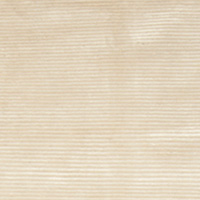My Love of Handmade Things

![]() I recently went out searching for a new living room rug. I eventually found one that cost significantly more than I planned on spending. I bargained and got the price down, which helped me rationalize the somewhat expensive purchase. Then I spent the rest of the week beating myself up about spending so much.
I recently went out searching for a new living room rug. I eventually found one that cost significantly more than I planned on spending. I bargained and got the price down, which helped me rationalize the somewhat expensive purchase. Then I spent the rest of the week beating myself up about spending so much.
It’s two weeks later and I now love the new rug and the way it complements the decor of my flat. I also love the fact that it is handmade. I was told it took eight months to weave. The warp and weft of the stitching is intricate; variations of its natural wool color shows as off-white, then ivory, then almost light yellow. Nothing artificial. It is Tibetan wool is special and comes from Tibetan sheep high up in mountain plateaus. It feels soft and lovely underfoot. Wool is also environmentally-friendly. Acrylic rugs are made from petroleum, are perfectly uniform with no color variations, and off-gas and shine.
It’s not that I’m a rich man, far from it. I just love handmade things, including rugs. I have African art, a Noguchi coffee table and some nice and very comfortable designer chairs. In the machine age, handmade objects become more valuable. Though more expensive, they provide more pleasure over the long run.
I was observing my surroundings the other night while listening to music. Being in a nice environment enhances the musical experience.
A Victorian writer, John Ruskin, famous for his book The Stones of Venice, once wrote that it’s better to pay a little bit more and get complete satisfaction; less than complete satisfaction often translates as no satisfaction at all.
Another writer, the brilliant philosopher Alan Watts, once wrote about something he called “spiritual materialism”. By this he meant that true appreciation for the tactile beauty and form of high-quality material objects, of handmade things, is different from the blind materialism of acquiring things but not really valuing them. Buying then discarding. The value of things goes down the drain the minute of acquisition. The material objects are more than devalued; they never had much value to begin with.
When taking my silver flute in for an overhaul a few years ago, I was berated by the technician that my flute was machine-made, not like the Japanese handmade solid-silver flutes he loved and worked on. He told me my flute was cheaply constructed. Well, he was wrong; my flute happens to be a really good instrument with a great sound, even though it only cost me only $350.00 back in 1978. It is a precision and well-made instrument. Would I like to own a handmade solid sterling silver Muramatsu flute that costs $8000? Of course I would, but I’m not a good enough player to deserve it. Plus, I’ve had my flute for over 30 years now and have developed a strong attachment to it. For this reason, it’s worth more to me than an expensive handmade professional flute that a virtuoso flutist would use when auditioning for Juilliard.
Thinking about my new handmade rug, I’m reminded of the origin of the word sabotage. Sabots are small sailboats, but are also Dutch wooden shoes that mimic the sailboat shape. You see them in old Dutch paintings. During the industrial revolution in the mid-1800s, laid-off textile workers in Holland threw their wooden shoes into the gears of the huge textile mills that replaced them. Hence the word.
Handmade things are things of beauty and we appreciate them more. And that just grows with time. Which is to say: I’m happy I bought the rug.
← BACK